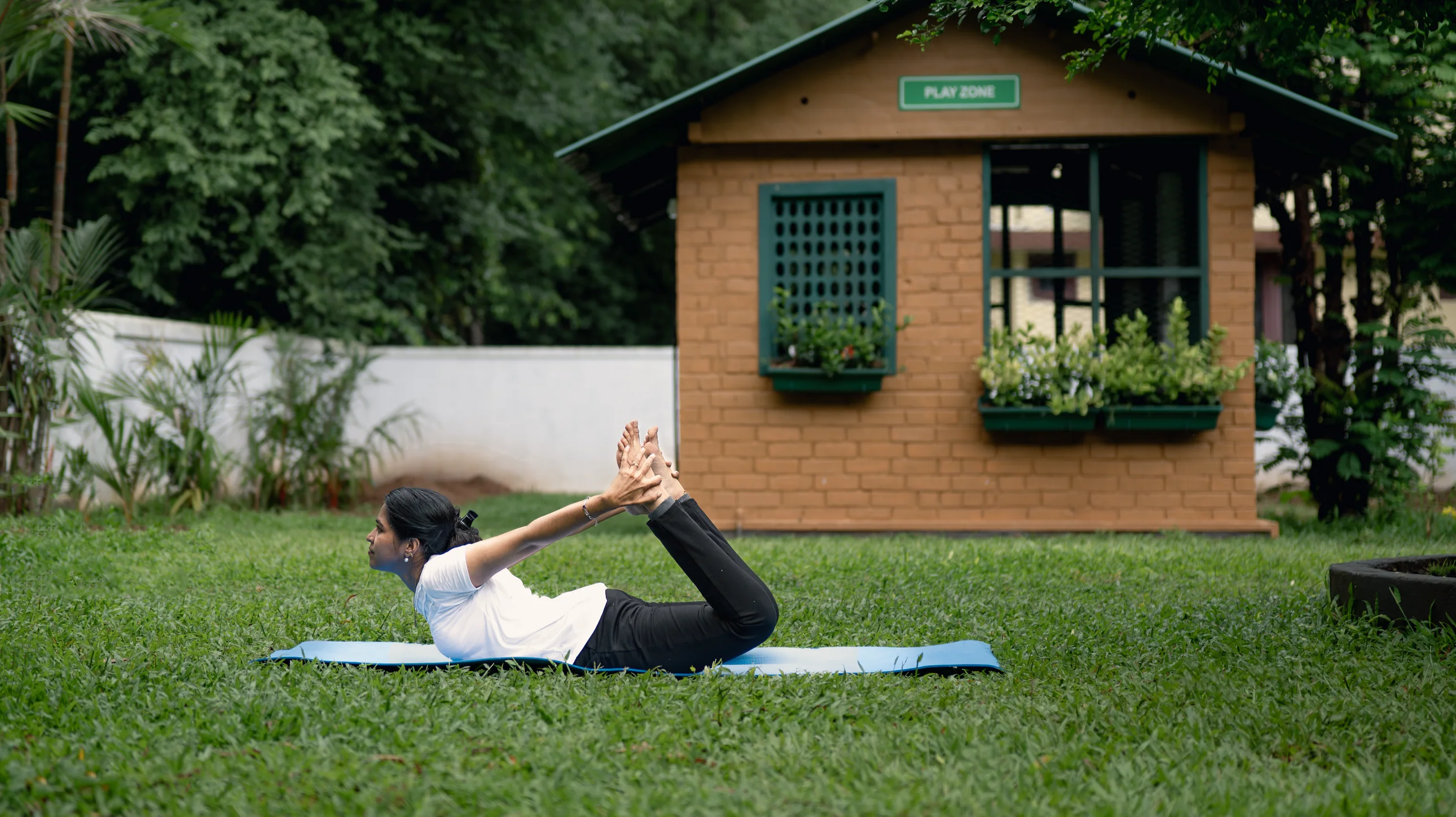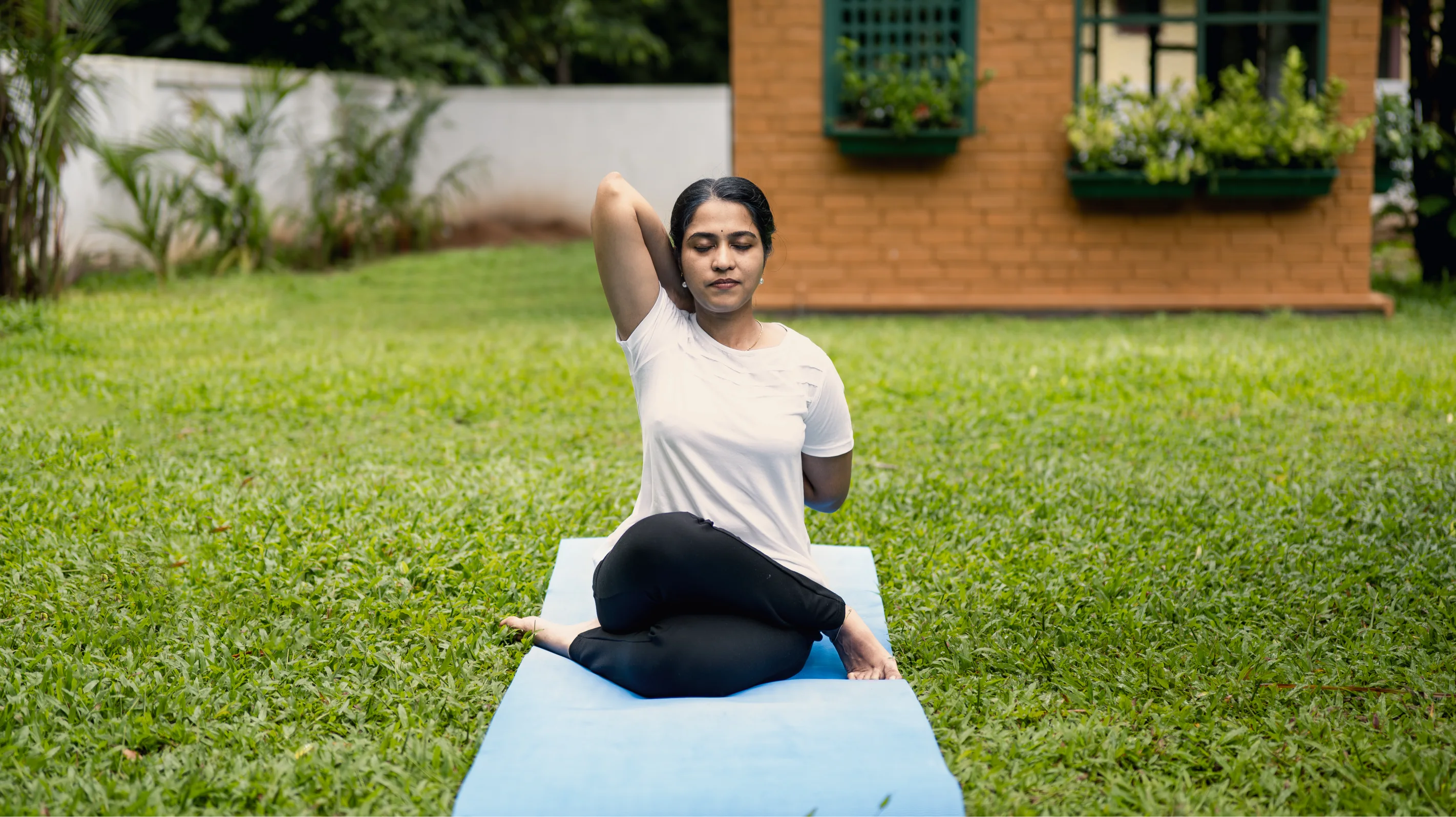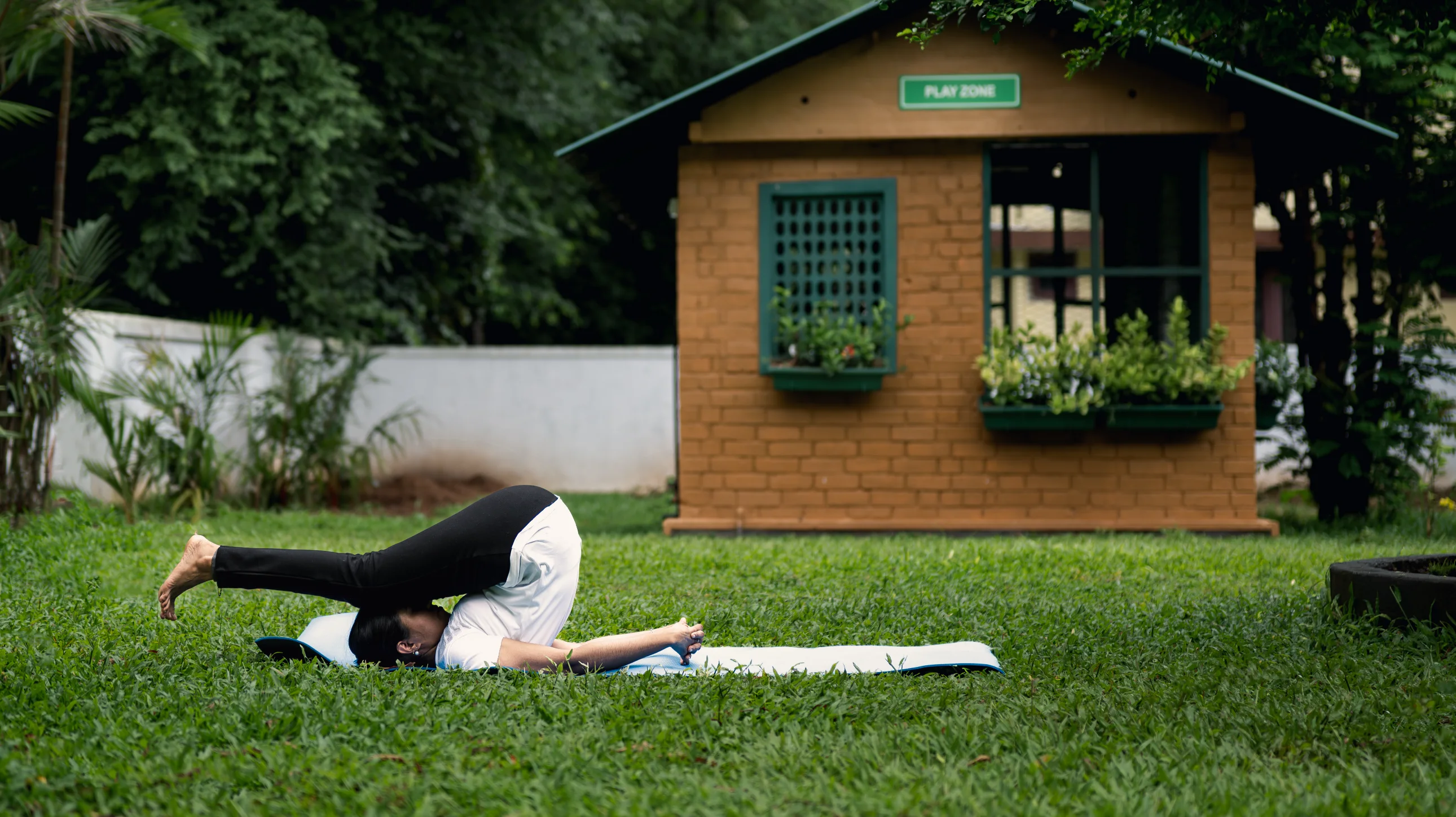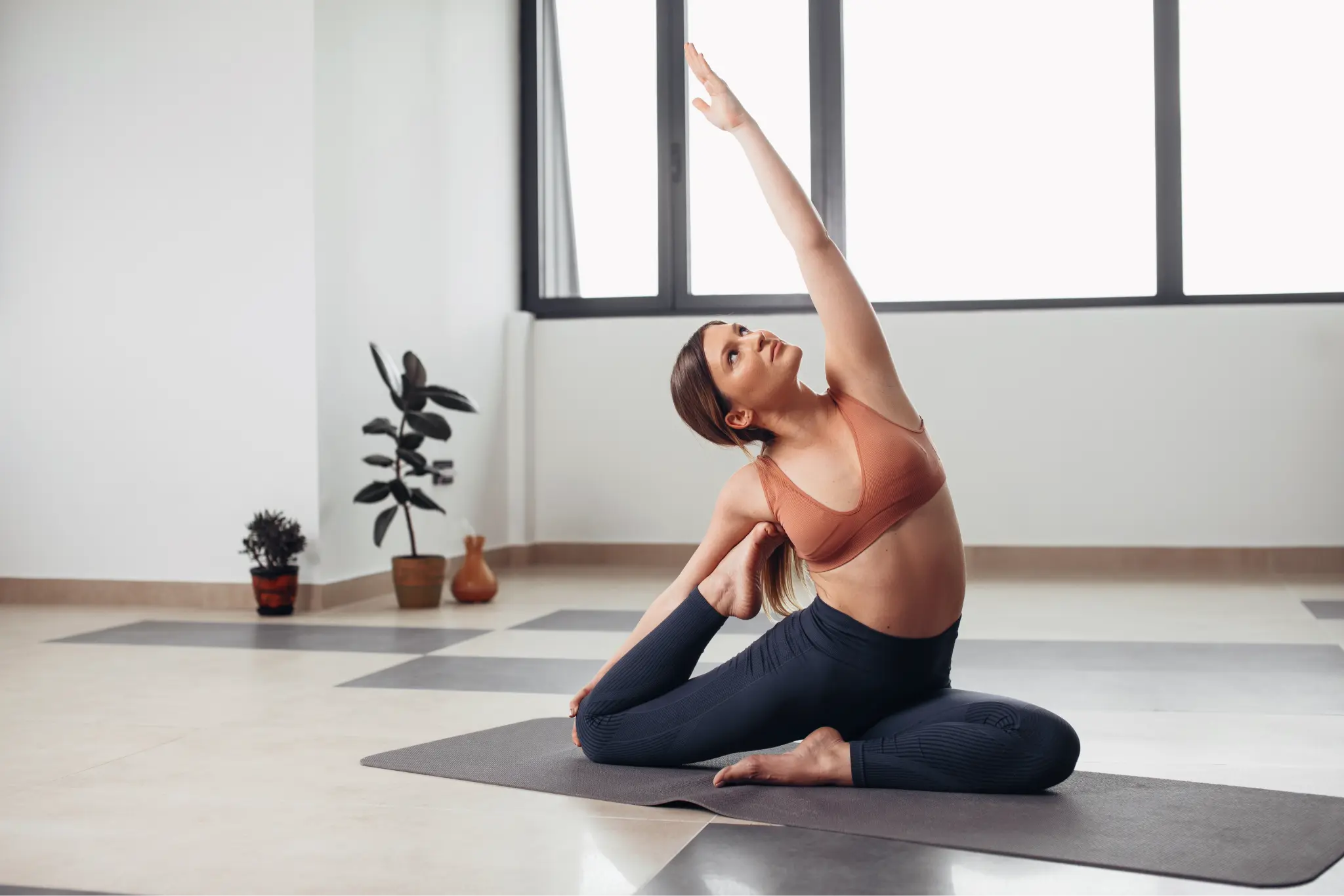Asanas
Unlock Vitality With the Power of Yoga Asanas
Asana, which translates to “seat” in Sanskrit, is the term used in yoga to describe any particular physical posture. Yoga has benefits on many levels. Yoga takes a comprehensive approach to health and helps practitioners deal with day-to-day challenges, ongoing concerns, and health difficulties. Additional benefits of yoga asanas include the development of awareness, increased mental capacity, healing, opening up mental and emotional blockages, promoting flexibility and mobility in the body, and better breathing. Not only is yoga beneficial for achieving good physical and mental health, but it also improves relationships by cultivating kindness, mindfulness, compassion, and calmness. It fosters love and peace between people. Regular yoga practice helps people become more emotionally in control and live disciplined, happy lives. Yoga asanas strengthen muscles, increase stamina, boost immunity, and teach people how to lead yogic lives.
66dee2651c804.jpg)
Ardha Chakrasan
Ardha chakrasan is a useful pose for improving posture and lowering stress because it reverses the natural tendency to circle the shoulders and slump forward. It eases stress by releasing the shoulders and neck. It is best to perform Ardha chakrasan early in the morning, on an empty stomach. Maintain a straight posture while standing in Tadasana on a mat or the ground. For support, place your palms on your waist with your fingers pointing forward. Bend backwards as much as you can gradually while supporting your waist with your hands. Hold this Ardha Chakrasan pose while maintaining your balance and having regular breathing. Slowly return to your starting posture as you exhale, and then take a moment to unwind, observing the changes in your breathing and the stretched places. Depending on your ability, repeat this exercise three to five times within five minutes.
66dee1c1c2d45.jpg)
Vajrasan
Vajrasan is a basic seated posture found in yoga. The Sanskrit word vajra, which means diamond or thunderbolt, is where the expression originates. Vajrasana also helps with digestion, eases or prevents constipation, and strengthens the muscles in the pelvis. To begin, kneel on the floor, preferably on a yoga mat. Align your feet with your legs, pull your knees and ankles together, and make sure your big toes touch the bottoms of your feet as you face upward. Breathe out while you recline on your legs, placing your thighs on your calves and your buttocks on your heels. Once you find a comfortable posture, place your hands on your thighs and move your pelvis slightly back and forward. Slowly inhale and exhale while erecting your back, pulling your body up with your head, and pushing your tailbone towards the ground. With your chin parallel to the floor and your hands palm down on your thighs and your arms relaxed, hold your head straight and look forward.
66ebfc61debe8.jpg)
Ashwa Sanchalanasana
Ashwa Sanchalanasana, or Equestrian Pose, is a deep lunge position stretching the legs, hips, and spine. Ashwa Sanchalanasana, often included in the Sun Salutation sequence, helps increase energy levels, relieve stress, and boost concentration. It is recommended to improve flexibility in the lower body, strengthen the thigh muscles, and enhance balance and coordination. Practising this asana stimulates the digestive system, improves posture, and opens the chest, enabling deeper breathing. This pose is helpful for those seeking to improve physical endurance and mental clarity, by strengthening the core muscles and enhancing the body.
66ebfcdb0629b.webp)
Chakrasana (Wheel Pose)
Chakrasana, or Wheel Pose, is a back-bending asana, stretching the spine. It helps to open the chest and shoulders, strengthens the arms, legs, and core muscles, and is beneficial for improving flexibility and balance. This asana strengthens the heart muscles, promoting energy flow. Chakrasana is recommended to enhance spinal flexibility, improve posture, and help in relieving stress by activating the nervous system. It can also aid in reducing anxiety and energising the body. Regular practice of Chakrasana can increase blood circulation and improve lung capacity.

Dhanurasana (Bow Pose)
Dhanurasana, or Bow Pose, is a powerful back-bending asana that stretches the entire front body while strengthening the back muscles. In this pose, the body takes the shape of an archer’s bow, promoting flexibility in the spine and toning the abdominal organs and respiratory functions. This asana is suggested for those who are looking to improve digestion, relieve constipation, and reduce fatigue. Dhanurasana is also known to stimulate the reproductive organs, making it beneficial for menstrual health. Regular practice of Dhanurasana enhances your posture, increases energy levels, and can relieve stress and anxiety.

Gomukhasana (Cow Face Pose)
Gomukhasana, or Cow Face Pose, is a seated asana that focuses on opening the shoulders, hips, and chest. In this asana, you can pose and stretch the arms, shoulders, and thighs while improving posture and flexibility. Gomukhasana helps in relieving tension from the upper back and shoulders, making it beneficial for people who face tightness in these areas due to prolonged sitting or stress. It also strengthens the spine and improves lung capacity by expanding the chest. Practising this pose regularly can help relieve stress, calm the mind, and boost concentration, making it a well-rounded asana for both body and mind.

Halasana (Plough Pose)
Halasana, or Plough Pose, is an inverted pose where the feet are carried over the head, resembling the shape of a plough. This asana stretches the spine, shoulders, and hamstrings while stimulating the abdominal organs. It is known for its calming impact on the nervous system, helping to reduce stress and fatigue. Halasana promotes flexibility in the spine, improves digestion, and can relieve symptoms of back pain, enhancing blood circulation to the brain, and boosting focus and mental clarity. We recommend practising this asana regularly to improve overall posture, reducing tension, and calming the mind.
